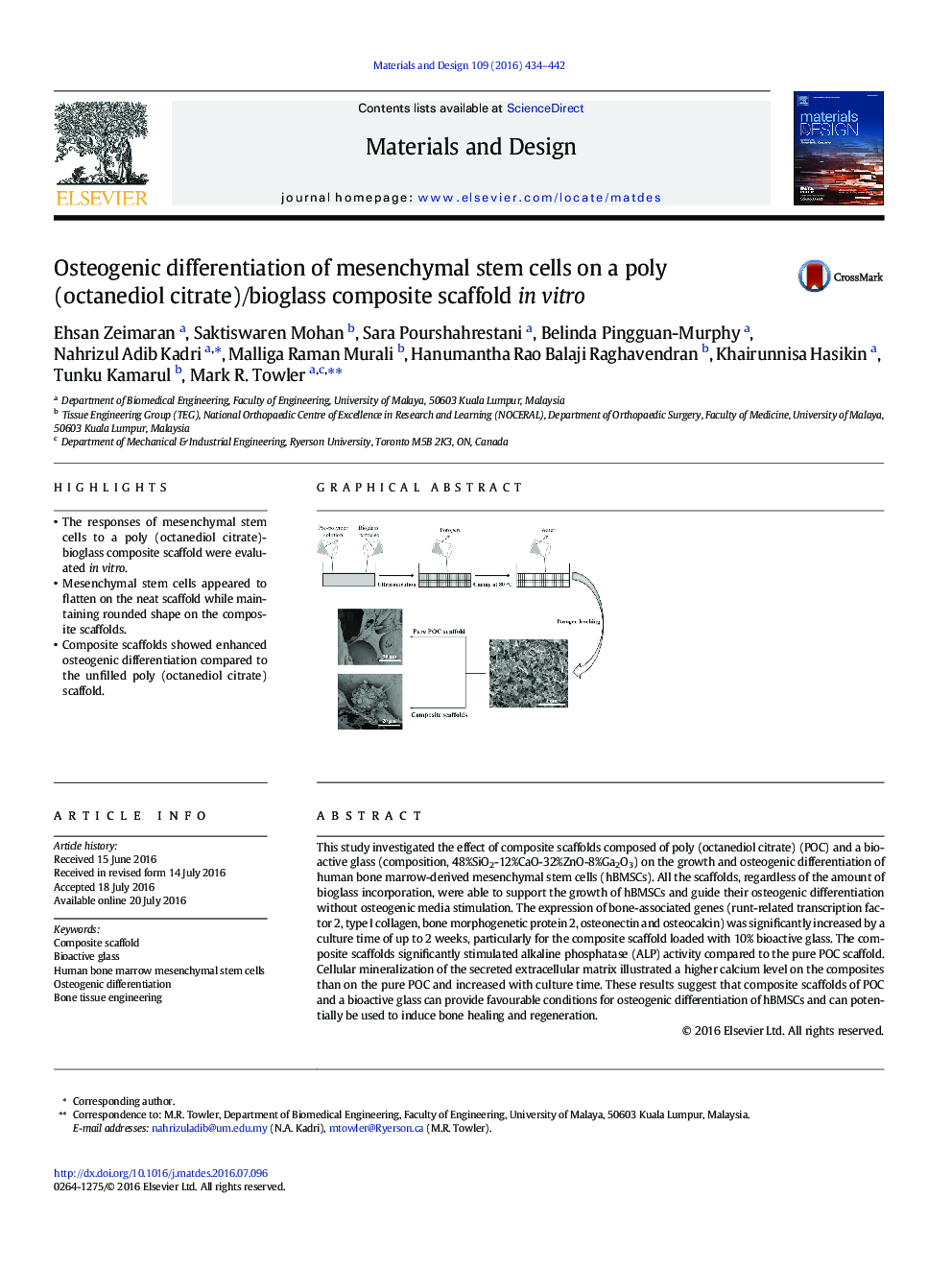| Article ID | Journal | Published Year | Pages | File Type |
|---|---|---|---|---|
| 827715 | Materials & Design | 2016 | 9 Pages |
•The responses of mesenchymal stem cells to a poly (octanediol citrate)-bioglass composite scaffold were evaluated in vitro.•Mesenchymal stem cells appeared to flatten on the neat scaffold while maintaining rounded shape on the composite scaffolds.•Composite scaffolds showed enhanced osteogenic differentiation compared to the unfilled poly (octanediol citrate) scaffold.
This study investigated the effect of composite scaffolds composed of poly (octanediol citrate) (POC) and a bioactive glass (composition, 48%SiO2-12%CaO-32%ZnO-8%Ga2O3) on the growth and osteogenic differentiation of human bone marrow-derived mesenchymal stem cells (hBMSCs). All the scaffolds, regardless of the amount of bioglass incorporation, were able to support the growth of hBMSCs and guide their osteogenic differentiation without osteogenic media stimulation. The expression of bone-associated genes (runt-related transcription factor 2, type I collagen, bone morphogenetic protein 2, osteonectin and osteocalcin) was significantly increased by a culture time of up to 2 weeks, particularly for the composite scaffold loaded with 10% bioactive glass. The composite scaffolds significantly stimulated alkaline phosphatase (ALP) activity compared to the pure POC scaffold. Cellular mineralization of the secreted extracellular matrix illustrated a higher calcium level on the composites than on the pure POC and increased with culture time. These results suggest that composite scaffolds of POC and a bioactive glass can provide favourable conditions for osteogenic differentiation of hBMSCs and can potentially be used to induce bone healing and regeneration.
Graphical abstractFigure optionsDownload full-size imageDownload as PowerPoint slide
